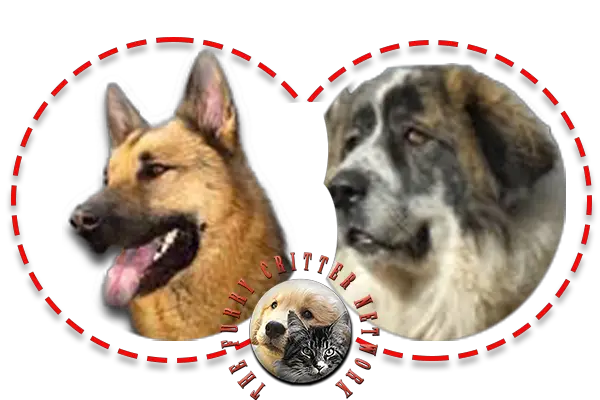German Shepherd Dog Breed Description - Cross #1
The German Shepherd Dog is a large and strong dog. The fur is a double-coat and can be either short or long haired. Although the black and tan saddle may be most recognizable, German Shepherds come in a variety of colors and patterns though not all are accepted by the various breed clubs or FCI. Two toned German Shepherds can be black and tan, black and red, black and brown, black and silver, black and cream, blue and tan, or liver and tan. Solid colors may be black and solid white or any of the dilutes (liver, blue, or cream). Dogs with coats that have tricolored hair (black and white with either brown or red) are called sable or agouti. Sables can come in a variety of mixtures as well including black and silver, black and red, black and cream, and black and tan. Some various markings are referred to as 'striping' (black stripe markings on the legs found in some sables), "pencilling" (also often found on the sable as black lines on the top of the dog's toes), "tar heels" (black that runs down the back of the dog's legs), and (grey hairs along the back of a female or a neutered male.)
Different kennel clubs have different standards for the breed according to size, weight, coat color, and structure. German Shepherds that compete in dog shows, must have an appearance that conforms with the guidelines of the individual kennel club. Some common disqualifying faults include ears that are not completely erect, or a muzzle that is not predominantly black. Ear faults can be caused by weak cartilage in the ears which allow them to flop (also called "friendly-tipped"). It is often possible for a veterinarian to correct this problem by taping up the ears.
There is no definite way to determine the force of a dog's bite, however it is widely accepted that the bite force of the German Shepherd Dog is roughly 750-1200 pounds, half that of a gray wolf. German Shepherd Dogs can weigh up to 125lbs for males and 85 lbs for females, although 80-90 lbs for males and 65-75 lbs for females are normal and preferred for working dogs.






